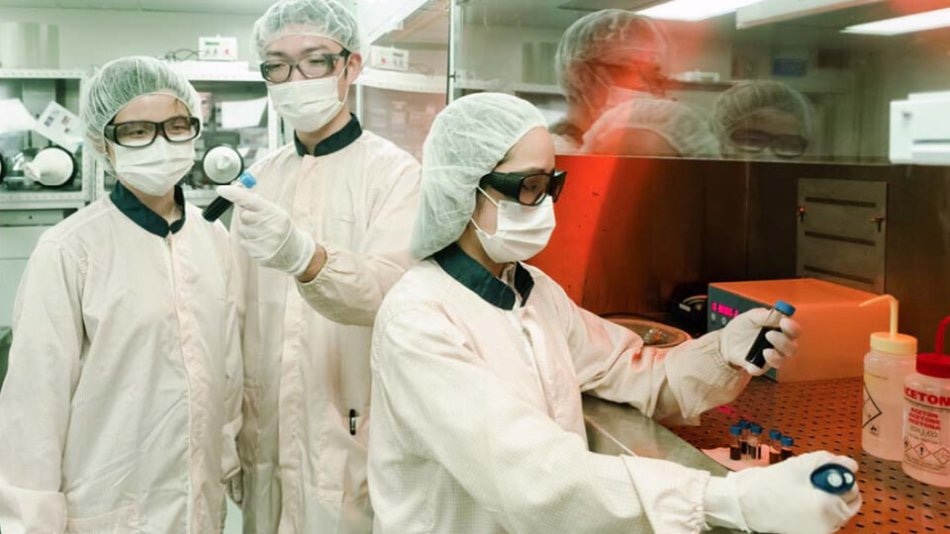Jan 16 2017
 Dr Png Rui-Qi (left), Mr Mervin Ang (middle), and Ms Cindy Tang (right) working on conducting polymers that can provide unprecedented ohmic contacts for better performance in a wide range of organic semiconductor devices. Credit: Seah Zong Long.
Dr Png Rui-Qi (left), Mr Mervin Ang (middle), and Ms Cindy Tang (right) working on conducting polymers that can provide unprecedented ohmic contacts for better performance in a wide range of organic semiconductor devices. Credit: Seah Zong Long.
Our lives have been reformed in multiple ways using semiconductors - the fundamental components of electronic devices. They are found in displays, microprocessors, lighting, and solar modules utilized in nearly all modern devices such as washing machines, mobile phones, and cars, as well as the Internet of Things that is fast emerging.
Scientists are on the constant search for enhanced methods for innovating devices that have better energy efficiency and functionality. Their research is centered specifically on earth-abundant materials by employing eco-friendly techniques.
One such category of technologies, with the ability to potentially produce light-weight, additively-manufactured, flexible, and large-area devices appealing for certain kinds of applications, is plastic or organic electronics produced from organic carbon-based semiconductors.
However, to produce devices with high performance, it is essential to use good ohmic contacts that have lower electrical resistances to enable the flow of maximum current between the semiconductor layers and the electrode. In the recent past, a team of researchers at the National University of Singapore (NUS) triumphantly created conducting polymer films with the ability to provide unparalleled ohmic contacts to ensure superior performance of plastic electronics such as solar cells, organic light-emitting diodes, and transistors.
The outcomes of the research have been recently reported in the journal Nature.
The crucial discovery of the researchers is to design polymer films that have expected superior work functions normally required to produce ohmic contacts. The least amount of energy required to release an electron from the film surface into vacuum is known as the work function. The researchers demonstrated that it is now easier to achieve higher work functions of 5.8 eV as well as lower work functions of 3.0 eV for films that can be produced from solutions at a lower expense.
To design such materials, we developed the concept of doped conducting polymers with bonded ionic groups, in which the doped mobile charges - electrons and holes - cannot dissipate away because their counter-balancing ions are chemically bonded. As a result, these conducting polymers can remain stable despite their extreme work functions and provide the desired ohmic contacts.
Dr Png Rui-Qi, Senior Research Fellow, NUS
An alliance between the materials chemistry team led by Associate Professor Chua Lay-Lay from the Department of Chemistry at the NUS Faculty of Science and the physics team led by Associate Professor Peter Ho at the Department of Physics from the same faculty, as well as researchers from Cambridge Display Technology Ltd (a subsidiary of Sumitomo Chemical Co., Ltd), resulted in this discovery.
The lack of a general approach to make ohmic contacts has been a key bottleneck in flexible electronics. Our work overcomes this challenge to open a path to better performance in a wide range of organic semiconductor devices. We are particularly thrilled about this Singapore-led innovation.
Dr Png Rui-Qi, Senior Research Fellow, NUS
Associate Professor Chua, while commenting on the salience of the research, said that “The close partnership of the chemists and physicists has made this innovation possible. We are now working with our industrial partner to further develop this technology.”